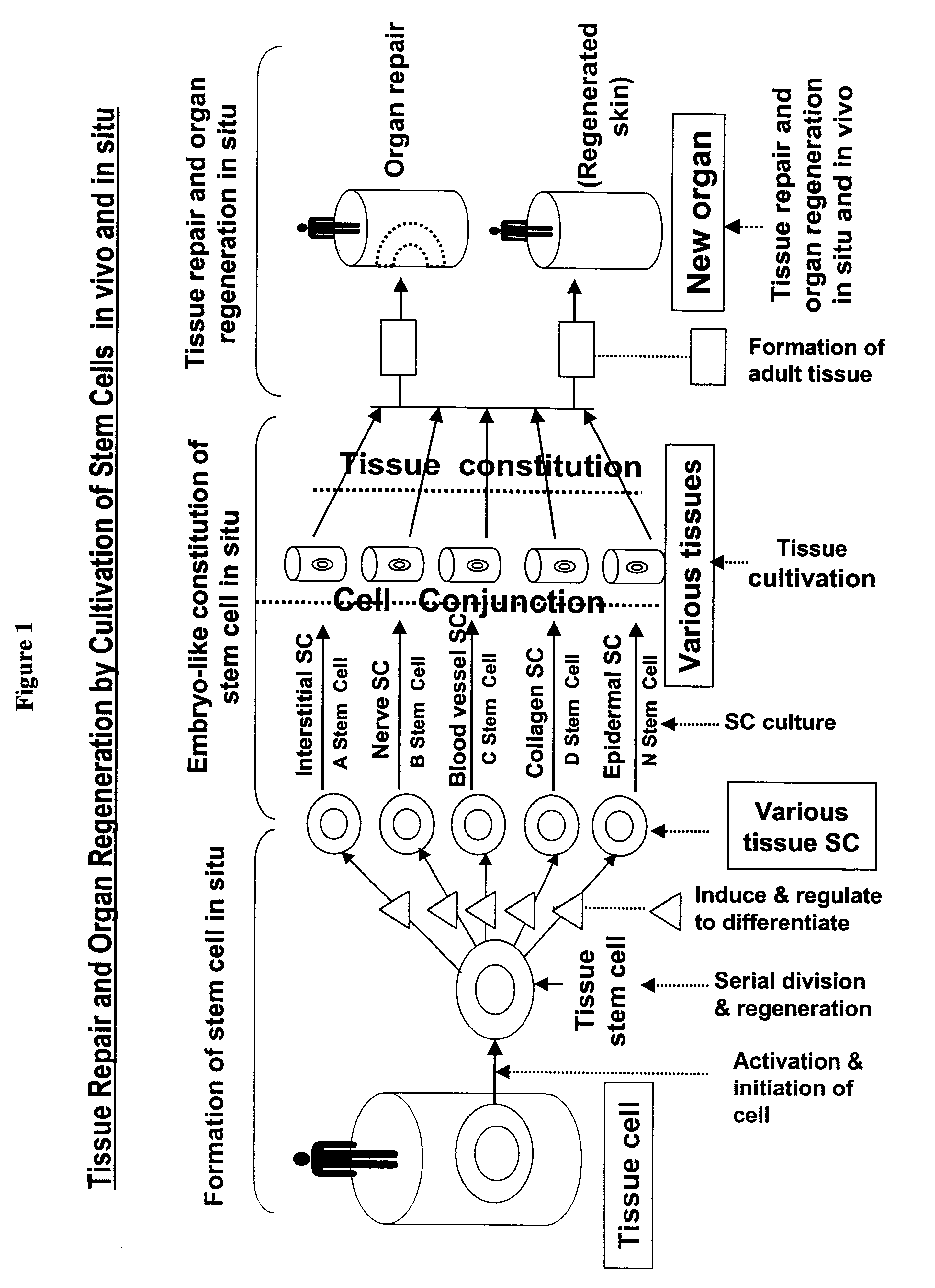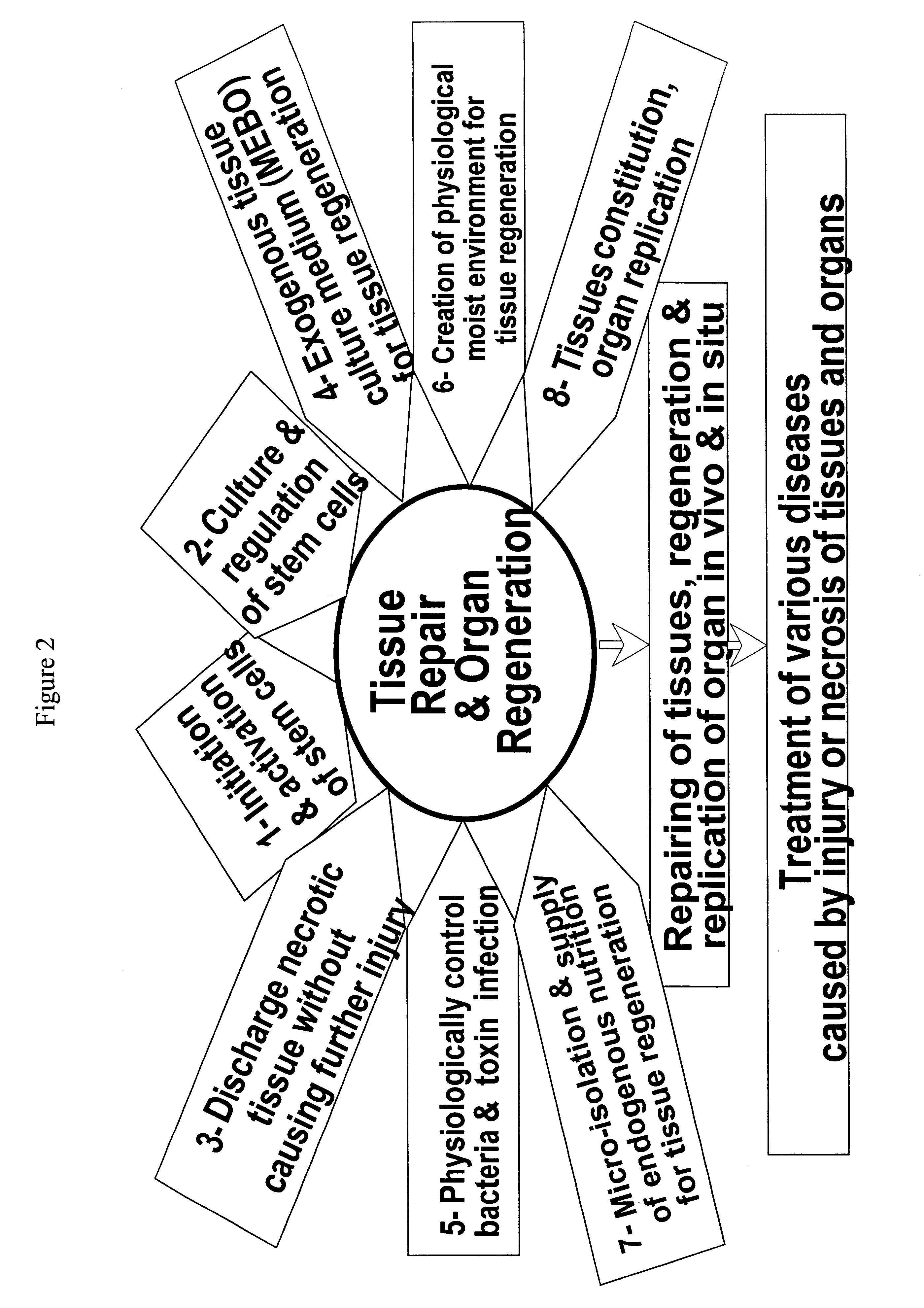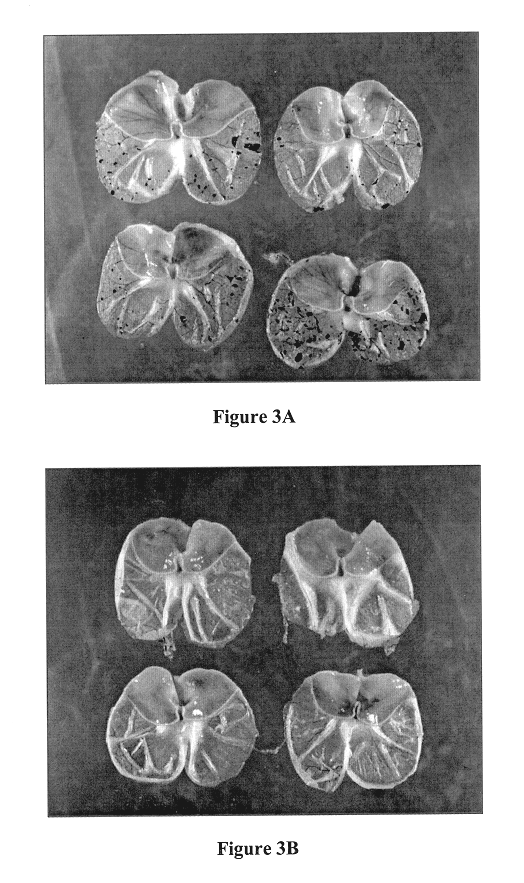Method and composition for repairing and promoting regeneration of mucosal tissue in the gastrointestinal tract
a technology of mucosal tissue and composition, which is applied in the direction of drug composition, biocide, aerosol delivery, etc., can solve the problems of ulcers that cannot be completely cured, anti-acids or anti-ulcer drugs, can not be very effective in preventing recurrence, and cannot be used to relieve symptoms temporarily, and the physiological structure and function of the mucosa has not been restored
- Summary
- Abstract
- Description
- Claims
- Application Information
AI Technical Summary
Benefits of technology
Problems solved by technology
Method used
Image
Examples
Embodiment Construction
The following provides an example of the manufacturing process of an embodiment of the composition of the present invention (designated as "GI capsules"). Also described are safety profiles and therapeutic efficacy of the GI capsules.
1. Manufacturing Process of GI Capsules
The manufacturing process of the GI capsules is illustrated in a flow chart in FIG. 6. First, raw materials for the production of the GI capsules are purified according to industrial standards. Sesame oil was filtered and transferred to an oil tank. Roots of the plant huangqin (Radix Scutellariae) containing flavonoids are washed, cut into small pieces, pulverized, sieved, and transferred into a stock tank. Beeswax was purified by aqueous decoction.
Second, the purified sesame oil and huangqin (100 kg: 5 kg) were added into a reaction tank, stirred and heated at 120.degree. C. for 50 minutes. The dreg was filtered and discarded. The filtrate was labeled as drug oil I.
Third, drug oil I was pumped into another reactio...
PUM
| Property | Measurement | Unit |
|---|---|---|
| length | aaaaa | aaaaa |
| size | aaaaa | aaaaa |
| size | aaaaa | aaaaa |
Abstract
Description
Claims
Application Information
 Login to View More
Login to View More - R&D
- Intellectual Property
- Life Sciences
- Materials
- Tech Scout
- Unparalleled Data Quality
- Higher Quality Content
- 60% Fewer Hallucinations
Browse by: Latest US Patents, China's latest patents, Technical Efficacy Thesaurus, Application Domain, Technology Topic, Popular Technical Reports.
© 2025 PatSnap. All rights reserved.Legal|Privacy policy|Modern Slavery Act Transparency Statement|Sitemap|About US| Contact US: help@patsnap.com



